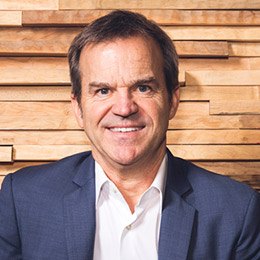Mark your calendar for Mediaweek, October 29-30 in New York City. We’ll unpack the biggest shifts shaping the future of media—from tv to retail media to tech—and how marketers can prep to stay ahead. Register with early-bird rates before sale ends!
As this $21 billion television upfront marketplace wraps up negotiations between the networks and media buyers, it may come as a surprise to some that the networks are commanding actual price and revenue increases, landing somewhere north of 8–9% in pricing for primetime, according to some reports. After all, TV’s death—or at least irrelevance as an ad medium—has been predicted for more than a decade now. Roadkill under the tires of the massive digital marketplace.
Truth is, all the options available to the modern media agency have a role to play, something of a team sport: digital’s the sharpshooter; radio, mobile and out of home are all stout defenders; social’s the boost off the bench; and TV is your playmaker, tying all the other elements together. Nothing has proven stronger than sight, sound and motion to drive brands’ needs.
Here’s why.
For one, television itself has changed immensely. Where once the networks shunned the idea of offering their content anywhere else besides “on the air,” today every major network has some sort of streaming play or on-demand iteration, reflecting consumers’ desire to consume content when and where they choose rather than by appointment viewing. Consumer interaction with TV content on these newer platforms creates new data and information streams that enable more efficient and effective investment by agencies for their clients.
Along the way, TV became video, aggressively selling digital alongside its own linear- and time-shifted content. Add to that addressability and more advanced cross-measurement tools that show off exactly how central TV is to most marketing mixes. There’s a reason Live Ramp just agreed to spend $150 million to buy Data Plus Math: It’s because data-driven TV has helped marketers target more effectively while still getting reach.
The medium also became the last bastion of live event programming, something marketers are always looking to tap for real-time connection to mass audience and shared experience. Besides the ubiquity of the Super Bowl, the recent Stanley Cup Finals delivered record ratings for NBC (and a win for my team, the St. Louis Blues), while the U.S. Women’s National Soccer team drew massive ratings for a daytime match as it conquered the Women’s World Cup.
Most major TV networks have wisely figured out that reduced ad loads actually command stronger pricing, which helps in part to explain the strong CPM gains they are asking for this year. TV has also taken advantage of the digital duopoly’s significant brand safety issues by promoting its greater control over where exactly a marketer’s campaign runs. It doesn’t hurt that there’s no shortage of studies supporting the notion that in order to build a brand, TV still delivers needle-moving results. And brands need to tell meaningful stories, which are more often better told through sound and motion.
Finally, the surrounding buzz around TV content—in the form of social chatter—can provide valuable insight into which programs (across entertainment, sports, news and anything else) elicit action and response from viewers. Any agency not harnessing that data to inform the most meaningful and effective investment is leaving value and savings on the negotiating table.
All these new realities help to explain why direct-to-consumer marketers, the hottest category in marketing today, are investing more in traditional media like TV, with spend jumping 60% in 2018 to $3.8 billion. Meanwhile, the usual spenders for the most part haven’t backed off their TV investments, from autos to pharmaceuticals to banking. Using TV to drive awareness to a new product line simply remains the most effective use of marketing dollars.
We’ll soon know where the TV upfront market lands. The networks are still pushing for 12–15% pricing gains, but the market seems to be bearing increases closer to 8–9%. As long as the sales needle moves for those securing their commitments, this market will continue. Why else would we do it?








